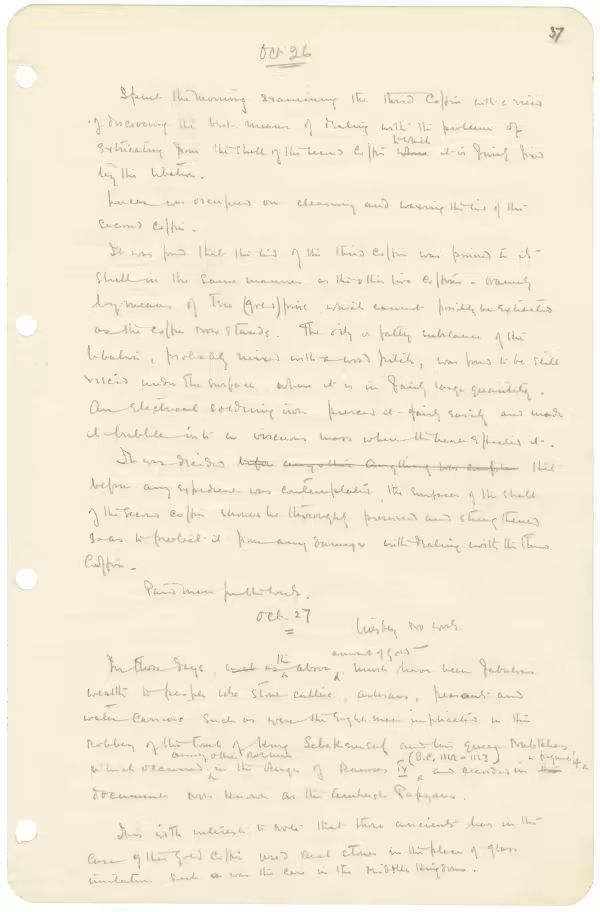TAA i.2.3.37
People mentioned: Egyptian workforce; Alfred Lucas.

© Griffith Institute,
University of Oxford
Oct 26
Spent the morning examining the Third Coffin with a view
of discovering the best means of dealing with the problem of
extricating from the shell of the Second Coffin where <to which> it is firmly fixed
by the libation.
Lucas was occupied on cleaning and waxing the lid of the
Second Coffin.
It was found that the lid of the Third Coffin was pinned to its
shell in the same manner as the other two coffins - namely
by means of ten (gold) pins which cannot possibly be extracted
as the coffin now stands. The oily or fatty substance of the
libation, probably mixed with a wood pitch, was found to be still
viscid under the surface, where it is in fairly large quantity.
An electrical soldering iron pierced it fairly easily and made
it bubble into a viscous mass where the heat effected it.
It was decided before any other anything was comple that
before any expedient was contemplated, the surfaces of the shell
of the Second coffin should be thoroughly preserved and strengthened
so as to protect it from any damage with dealing with the Third
Coffin.
Paid men for the week.
Oct. 27
<Tuesday no work.>
In those days, such as <the> above <amount of gold>, must have been fabulous
wealth to people like stone cutters, artisans, peasants and
water carriers such as were the eight men implicated in the
robbery of the tomb of King Sebekemsaf and his queen Nubkhas,
which occurred <among other robberies> in the reign of Ramses IX <(B.C. 1142-1123)> and recorded in the <a fragment of a>
document now known as the Amherst Papyrus.
It is with interest to note that those ancients hassic in the
case of the Gold Coffin used real stones in the place of glass
imitation such as was the case in the Middle Kingdom.